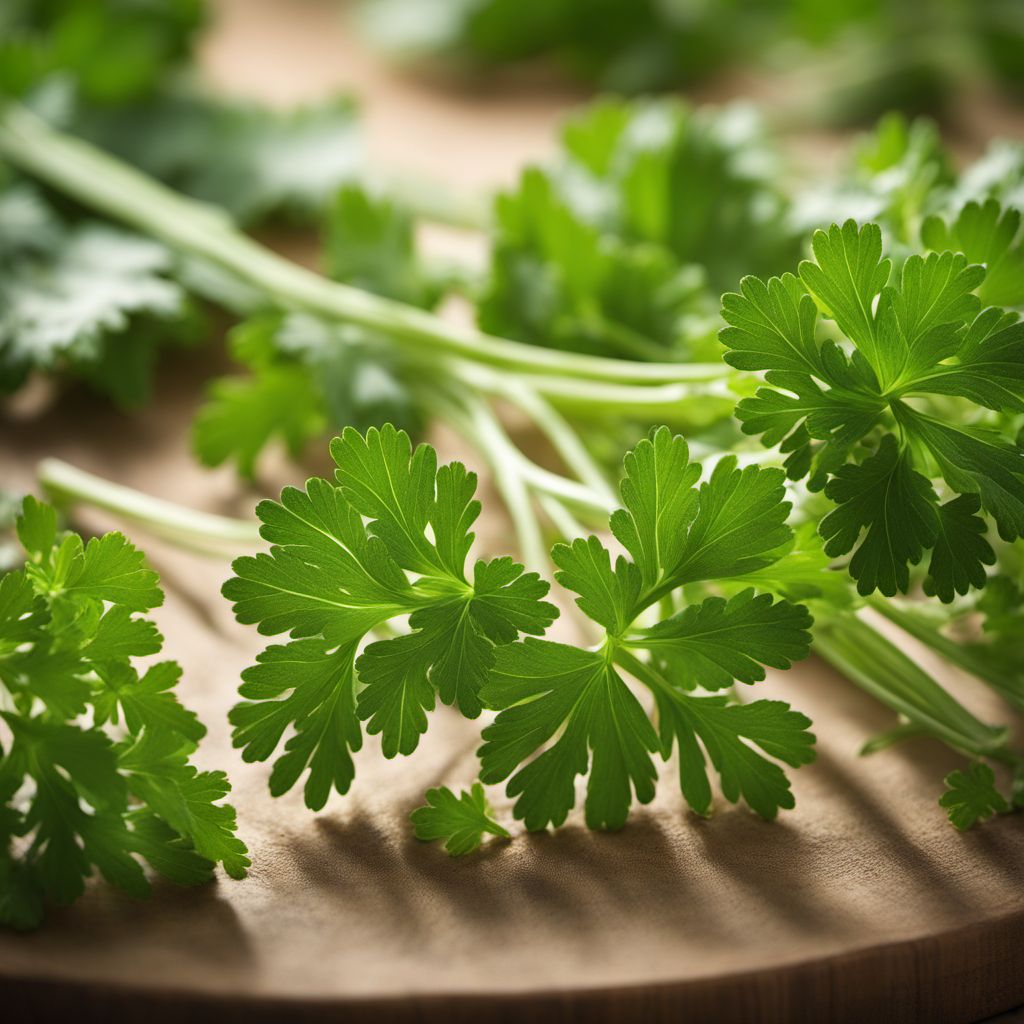
Ingredient
Parsley and similar-
Versatile Herb: Parsley and Similar
Parsley and similar herbs, such as cilantro and dill, are characterized by their delicate yet distinct flavors. Parsley has a mild, slightly peppery taste, while cilantro offers a bright and citrusy flavor. Dill has a unique combination of freshness and anise-like notes. These herbs have a leafy texture and are typically bright green in color, adding visual appeal to any dish.
Origins and history
Parsley has been cultivated for thousands of years and has a rich history in Mediterranean and Middle Eastern cuisines. Cilantro is widely used in Latin American, Asian, and Indian cuisines, while dill is popular in European and Scandinavian dishes. These herbs have been valued for their culinary and medicinal properties throughout history.
Nutritional information
Parsley and similar herbs are low in calories and rich in vitamins A, C, and K. They also provide essential minerals like iron and calcium. Incorporating these herbs into your diet can contribute to a well-rounded and nutritious eating plan.
Allergens
Parsley and similar herbs are generally safe for consumption and do not pose significant allergenic risks. However, individuals with known allergies to these herbs or related plants should exercise caution and consult with a healthcare professional if necessary.
How to select
When selecting parsley and similar herbs, look for bunches or packets that have vibrant green leaves without any signs of wilting or discoloration. Avoid herbs with yellow or brown spots, as they indicate age or decay. Freshness can also be determined by the aroma, as these herbs should have a pleasant and fragrant smell.
Storage recommendations
To prolong the freshness of parsley and similar herbs, trim the stems and place them in a glass of water. Cover the leaves loosely with a plastic bag and store them in the refrigerator. Alternatively, you can wrap the herbs in a damp paper towel and store them in a sealed container in the fridge.
How to produce
Parsley and similar herbs can be easily grown in home gardens or small pots. They thrive in well-drained soil and require regular watering. Plant the seeds or seedlings in a sunny spot and harvest the leaves as needed for fresh culinary use.
Preparation tips
Parsley and similar herbs can be used in a variety of dishes and cooking techniques. They are commonly used as garnishes, added to salads, soups, stews, and sauces, or used as a flavor enhancer in marinades and dressings. These herbs can also be incorporated into pestos, herb butters, or infused oils for added depth of flavor.
Substitutions
Cilantro can be substituted with parsley or basil in recipes that require a milder flavor profile. Dill can be replaced with fennel fronds or tarragon for a similar herbal and anise-like taste.
Culinary uses
Parsley and similar herbs are widely used in culinary applications, including Mediterranean, Middle Eastern, Latin American, Asian, Indian, European, and Scandinavian cuisines. They are commonly added to dishes like tabbouleh, salsa, curries, pasta, fish, and roasted vegetables to enhance their flavors and visual appeal.
Availability
Parsley and similar herbs are cultivated and available in various regions worldwide. They can be found in grocery stores, supermarkets, farmers markets, and specialty food stores. These herbs are also commonly grown in home gardens or herb pots.
